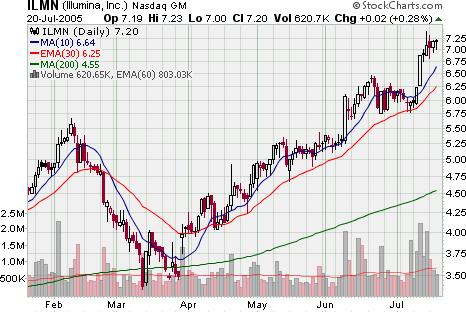The moving average is a simple technique to use, and it is employed by small investors and city experts alike. It can be carried out for individual shares, individual indexes or markets as a whole. All you really have to know is that a moving average line is just the average price of a stock over time. That’s it.
To find the moving average simply draw up a chart of past closing prices (the price of each share or index etc. when the market closed) and then superimpose a moving average which is the sum of previous closing prices divided by the number of days used in your sample.
The concept of the moving average is that when the two lines cross it indicates a change in direction of the value of the stock or the market.
To calculate a moving average you will need accurate information on past closing prices. The ‘Financial Times’ is a good source of this for UK markets and many of the financial bookmakers’ websites and other financial websites offer an archive of past closing prices which you can consult.
The number of days closing prices you include in your sample depends on the numbers of days into the future you are trying to make predictions for. For a short term moving average you might use the last five days closing prices. This would produce a market prediction for the next five days ahead. For a longer term prediction,
use the last 50 or 100 days closing prices. Every investor has their own ‘favourite’ sample period for moving averages. The most popular are :
4,5,9,10,13,18,38,40,50,100 and 200 days.
Draw up a chart with share or market price on the left and the relevant period of time along the bottom. Plot the closing prices each day and join them together to form a simple line graph.
You can now calculate and plot your moving average. This is done by taking the last, for example, five closing prices, adding them up and dividing them by the number of days to find an average figure. Calculate this each day from now on, using the previous five days data. Now mark your moving average line on the chart.
You can now make the following conclusions :
- If the share price line crosses the moving average line in an upward direction, it tends to suggest that prices are going to rise.
- If the share price line crosses the moving average line in a downward direction, it tends to suggest that prices are going to fall.
But note : Moving averages are not real time. They tend to lag the real share price.
The disadvantages of using moving averages are that as well as providing useful information on trends they can also provide misleading information. To increase the accuracy of this technique some investors plot two moving averages on one chart, eg. one for a 10 day period and another one for a 20 day period and then compare the results produced.
